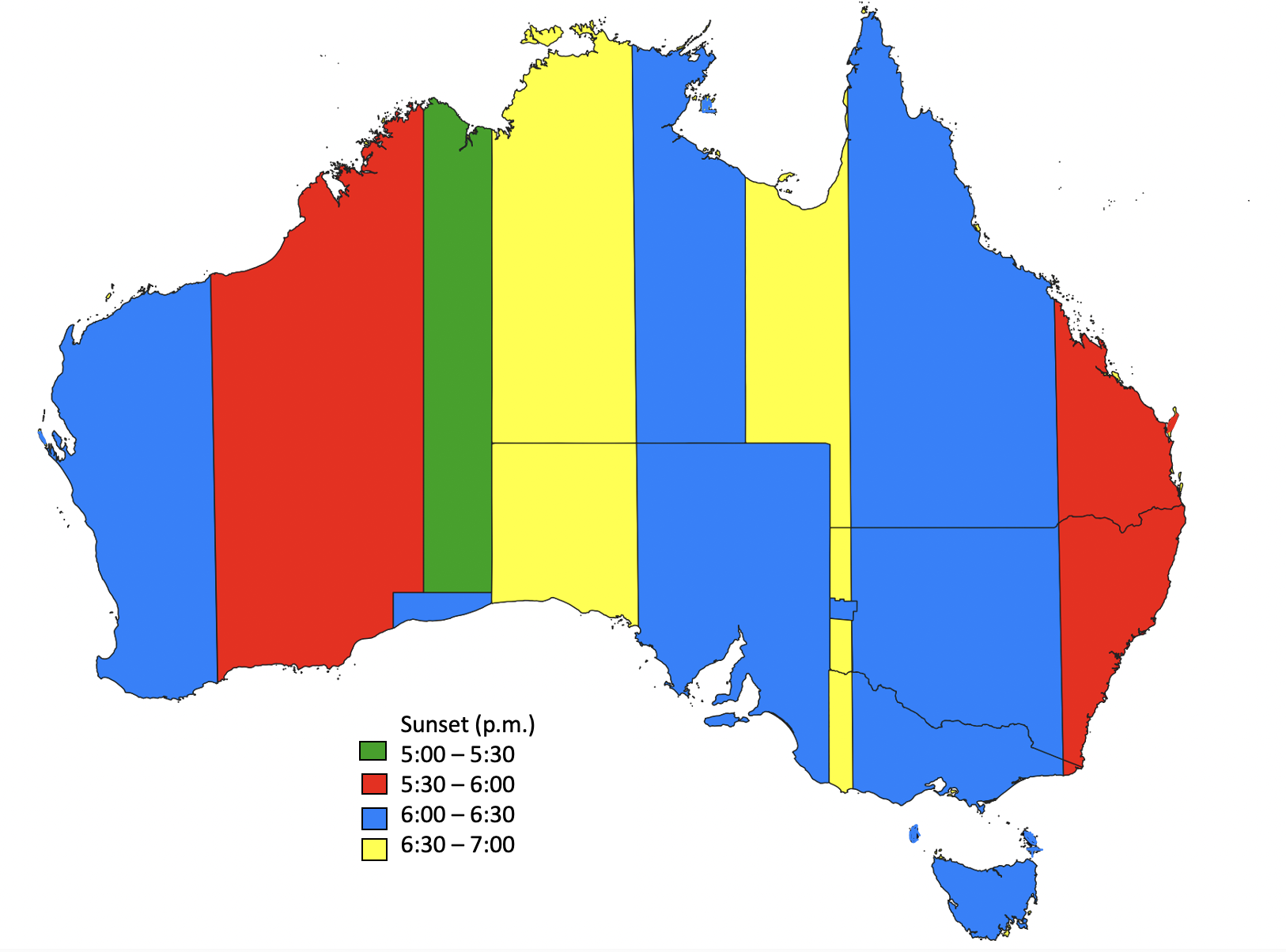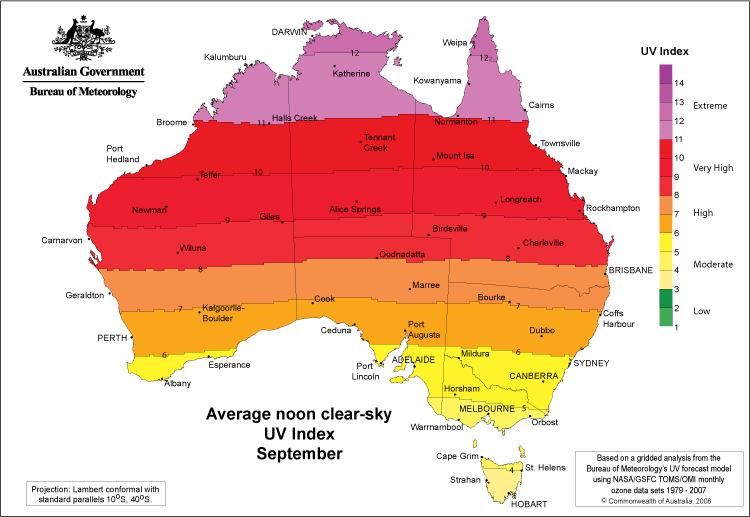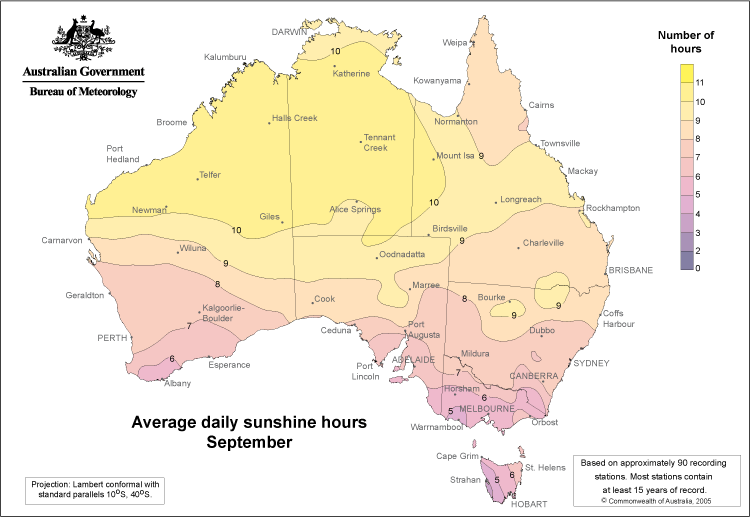Sun increasing towards the equinox
If you’ve been outside recently in the evening, you’ve likely noticed that the sun is setting later and later.
Each day during the month of September, locations across Australia have been gaining sunlight, at around 30-40 seconds per day in the far north (including Darwin) to about 3 minutes per day in the far south (about Hobart).
This comes as no surprise, as the spring equinox is fast approaching. During equinoxes, the days and nights are of about equal length and the phenomenon occurs twice a year - once in autumn (between 19 and 21 March) and once in spring (between 21 and 24 September). This year, the spring equinox will fall on 23 September, which happens to be next Saturday.
Inspired by Brian Brettschneider, an Alaskan climatologist who creates a plethora of interesting weather data maps including local sunset times on the fall equinox (found here), a similar map has been created for Australia using data from the NOAA Solar Calculator.

Figure: Sunset times around Australia (local time) during the spring equinox, occurring on September 23rd, 2023 (NOAA Solar Calculator, Global Monitoring Laboratory, 2023).
Towards the eastern side of local time zones, the sun logically tends to set earlier, as seen in the far eastern part of Western Australia, excluding the Australian Central Western Standard Time (ACWST), detailed here. Conversely, on the western side of time zones, the sun tends to set later. With parts of western Queensland, New South Wales, Victoria, South Australia and the Northern Territory having the sun set as late as 7:00pm.
Naturally, as spring approaches, the Ultraviolet (UV) Index is beginning to increase, with a few capital cities already in the High UV Index range.

Figure: Average noon clear-sky UV Index in the month of September (Bureau of Meteorology, 2008).
And the daily sunshine hours, too, look to be increasing. Whilst daylight hours are defined by when the sun is above the horizon, sunshine hours are influenced by this as well as cloud cover. Parts of the dry interior and far north tropics, still being in the dry season, are expecting over 10 sunshine hours during the month. Parts of the south, however, are still bearing the brunt of the passage of cold fronts, so sunshine hours could still be as low as 4-5 hours, especially around Tasmania & south coastal Victoria.

Figure: Average daily sunshine hours in the month of September across Australia (Bureau of Meteorology, 2005).
Keep an eye out for more information about the upcoming equinox next week. It won't be long until sunset will be much later as daylight savings time is due to start on Sunday, October 1st at 2am, when clocks will go forward one hour. So if you enjoy the evening darkness, soak it up while you can!